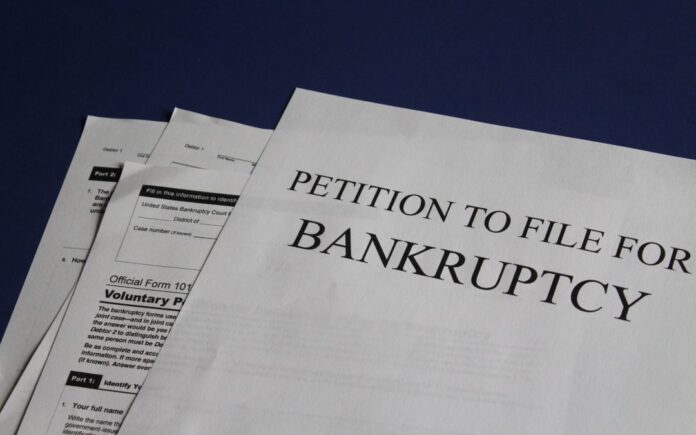While it sounds bad – and it is quite bad – filing for bankruptcy can come in handy if you’re in a dire financial situation. It erases some of your debt, giving you some relief until you can get back on your feet. Of course, there are disadvantages, like your bankruptcy being public information for home sellers, employers, banks, and businesses, but this doesn’t negate the fact that it helps in some cases. If you’ve decided to file for bankruptcy, don’t worry, it’s not a difficult process. It might be complicated, but it is quite easy once you figure out what you need to do. It’s all about following a few steps and submitting the right papers. Here’s everything you need to know.
Choose the Type of Bankruptcy you Want
There are 2 main categories that fall under Chapter 7 and Chapter 13 of the bankruptcy code. Chapter 7 is standard bankruptcy which includes the payment and erasure of debts. Under Chapter 7, you’ll pay as much as you can from your debt by surrendering nonexempt property before the debt gets erased. The rest of your property, you’ll get to keep. As for Chapter 13, it doesn’t completely erase your debt. It can either erase some of your debt to better allow you to make payments or restructure your payments more fittingly. Here the government talks to your creditors and helps reach a compromise that satisfies them while taking into account your financial situation.
Gather Your Financial Documents
There are a lot of financial documents you need to submit. Read this list carefully as you don’t want to miss anything:
- Form of identification: ID, passport, and social security number.
- Bank statements
- Documentation of income: Two most recent W-2s (wage and tax statements), pay stubs going back six months, and any proof of extra income (if any)
- Tax returns (past 2 years)
- Retirement Information
- Vehicle registration
- Mortgage information
- Any available documents related to your income, debts, loans, assets, and expenses.
Credit Counselling Course
This is a mandatory requirement for those filing for bankruptcy. In the six months before you’ve filed your petition, you need to reach out to a credit counseling agency (it must be approved by the Department of Justice). They’ll talk you through your options to find out if bankruptcy truly is the only option. The whole course should take an hour or so and in the end, you get a certificate which you’ll need to submit to court.
Fill, Print, and Submit your Forms
This part will take the most time and effort. You need to fill out over twenty forms, and you need to fill them out correctly. If you’re located in Ohio, however, you can avoid all this hassle. If you’re concerned about making mistakes, you can hire an Ohio bankruptcy lawyer to fill out the forms for you. All in all, it is the better solution given that they know what the bankruptcy court wants and they understand which label, title, asset, and name goes where which will save you a lot of time and effort. After you fill out your forms, print them, and along with the filing fee and course certificate, submit the papers to your local courthouse’s clerk.
Pay your Fees
For Chapter 7 bankruptcy, the filing fee is $338 and for Chapter 13, the fee is $313.00. Given that you’re filing for bankruptcy, the payment is divided into four installments over 120 days. After applying, you have to pay $80 within the first five days. Within the following 60 days, you’re required to pay another $80, then another $80 during the month after that or within 90 days of filing your petition. The last payment should be within a month of your previous payment and it should cover the remainder of the amount. If you can’t pay the amount even with the installments, you can apply for a waiver, but it will take time for the court to decide if you’ll qualify for the waiver.
Send the Documents to your Trustee
After submitting your paperwork, the court will appoint a trustee to supervise your case and manage your payments/asset liquidation as the court sees fit. After going through your paperwork, your trustee will contact you asking for specific documents. It’s imperative that you mail the requested documents right away so as to guarantee the best possible outcome for your case. Failure to submit any documents will result in your petition being denied.
Creditor Meeting
After a few days from filing your petition, on your court notice, you will find information regarding your 341 meeting, also known as the creditors’ meeting. Usually, it’s a meeting with the trustee to verify your identity and ask you a few questions. Your creditors are supposed to attend if they have any inquiries about your financial situation, but most don’t show up. The length of the meeting will depend on how many questions your creditors and trustee have, but overall, it shouldn’t take long.
Debtor Education Course
After filing for bankruptcy, you’ll need to go back to your credit counseling agency for a debtor’s education course. Its purpose is to advise you on the future and help you make better financial decisions. This all takes a minimum of two hours, but it will help you move forward and build your life back up again. Bear in mind, it is a mandatory course. You won’t be granted your bankruptcy discharge.
Once you’ve completed the entire process, all you’ll have to do is wait. If you’ve filed for Chapter 7 bankruptcy, it will take from 4 to 6 months to finalize the process. For Chapter 13, you’ll be granted your discharge after about four years or after you’ve gone through your repayment plan. Needless to say, the more details you provide, the more the court will be able to help you. Providing incorrect information, whether or not you’ve done so on purpose, can have negative effects on your application. Last but not least, many people believe it’s a good idea to rack up credit card debt buying luxuries since it will get erased anyway. Credit card companies can write a nondischargeability complaint asking the court to deny you your bankruptcy discharge which almost always works if you’ve spent a large sum. Ideally, you want to stop using your credit cards altogether. That said, best of luck on your journey moving forward.



















